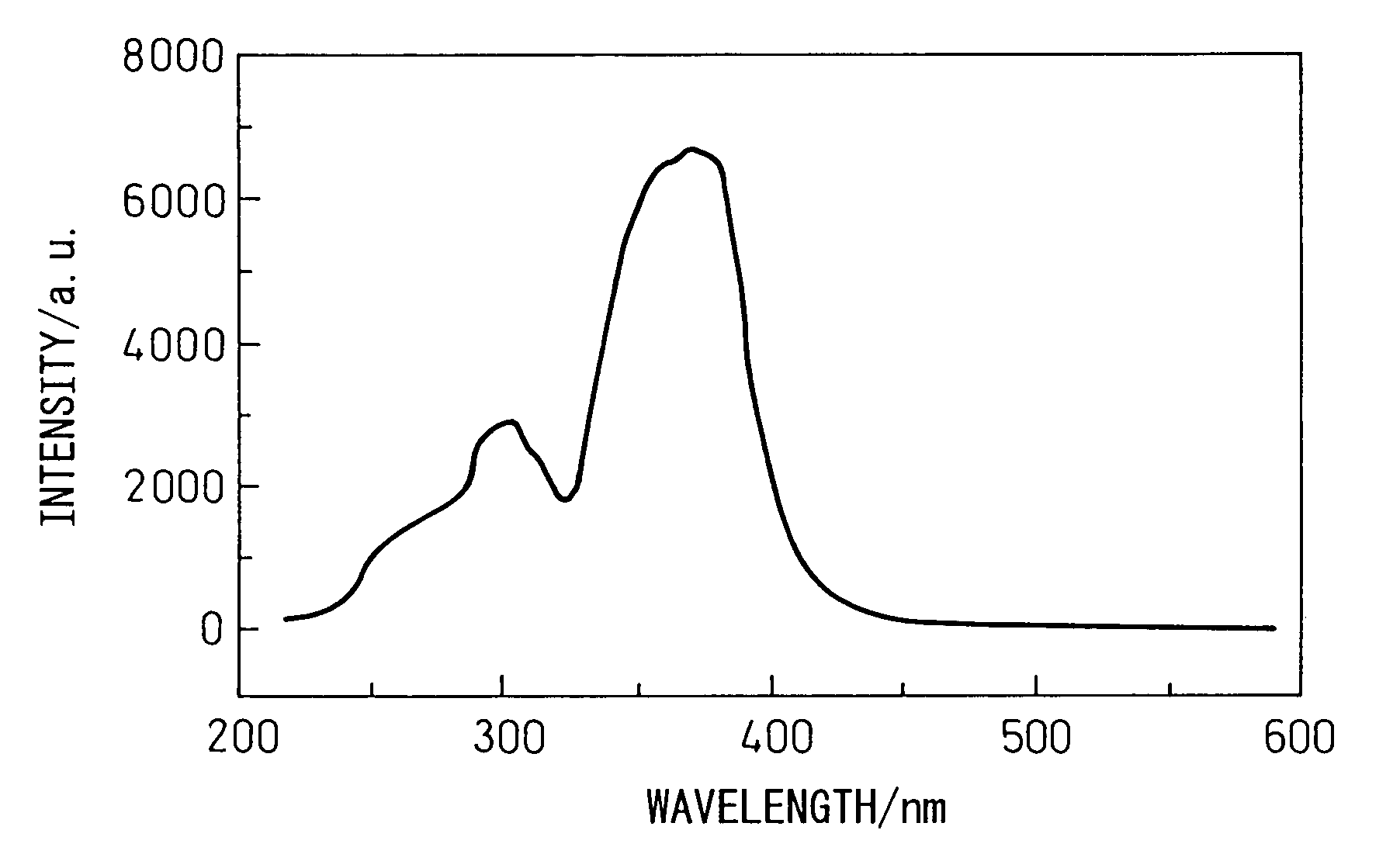Sialon-based oxynitride phosphor, process for its production, and use thereof
a technology of oxynitride phosphor and phosphor layer, which is applied in the direction of discharge tube/lamp details, discharge tube luminescnet screen, discharge tube/lamp details, etc., can solve the problems of low light-emitting efficiency, blue-tinted white light emission, and inadequate durability of the coated phosphor layer, and achieve high white brightness
- Summary
- Abstract
- Description
- Claims
- Application Information
AI Technical Summary
Benefits of technology
Problems solved by technology
Method used
Image
Examples
examples
[0059]The present invention will now be explained in further detail through the following concrete examples.
examples 1 – 8
Examples 1–8
[0060]Silicon diimide with a specific surface area of 750 m2 / g obtained by reaction of silicon tetrachloride and ammonia at below room temperature was thermally decomposed at 700–1200° C. to obtain nitrogen-containing silane compounds and / or amorphous silicon nitride powders with specific surface areas of 60–460 m2 / g. Each material was subjected to a known process for improving the condition of chafing between the powder and metal in the reactor material and powder handling machinery, in order to reduce the metal impurities contaminating the nitrogen-containing silane compound and / or amorphous silicon nitride powder to under 10 ppm. Also, by varying the oxygen concentration in the nitrogen gas circulating in the heating furnace to within the range of 20–1000 ppm, the oxygen content of the nitrogen-containing silane compound and / or amorphous silicon nitride powder was adjusted to the values shown in Table 1.
[0061]For Example 8 there was used nitrogen-containing silane com...
example 9
[0069]In this example, the nitrogen gas pressure and temperature for firing were changed. α-sialon powder was obtained in approximately the same manner as Example 5, except that the temperature was raised at a schedule from room temperature to 1200° C. over a period of 2 hours, from 1200° C. to 1440° C. over a period of 2 hours and from 1440° C. to 1800° C. over a period of 3.6 hours, in a pressurized nitrogen gas atmosphere at 10 atmospheres, and then was held at the same temperature for one hour for crystallization.
[0070]The specifications and mixing ratios of the starting materials are shown in Table 1, and the results of measuring the crystal phase, chemical composition, specific surface area, particle shapes, etc. of the α-sialon powders obtained in the same manner as in Examples 5 to 8 are shown in Table 2.
PUM
| Property | Measurement | Unit |
|---|---|---|
| size | aaaaa | aaaaa |
| size | aaaaa | aaaaa |
| specific surface area | aaaaa | aaaaa |
Abstract
Description
Claims
Application Information
 Login to View More
Login to View More - R&D
- Intellectual Property
- Life Sciences
- Materials
- Tech Scout
- Unparalleled Data Quality
- Higher Quality Content
- 60% Fewer Hallucinations
Browse by: Latest US Patents, China's latest patents, Technical Efficacy Thesaurus, Application Domain, Technology Topic, Popular Technical Reports.
© 2025 PatSnap. All rights reserved.Legal|Privacy policy|Modern Slavery Act Transparency Statement|Sitemap|About US| Contact US: help@patsnap.com



